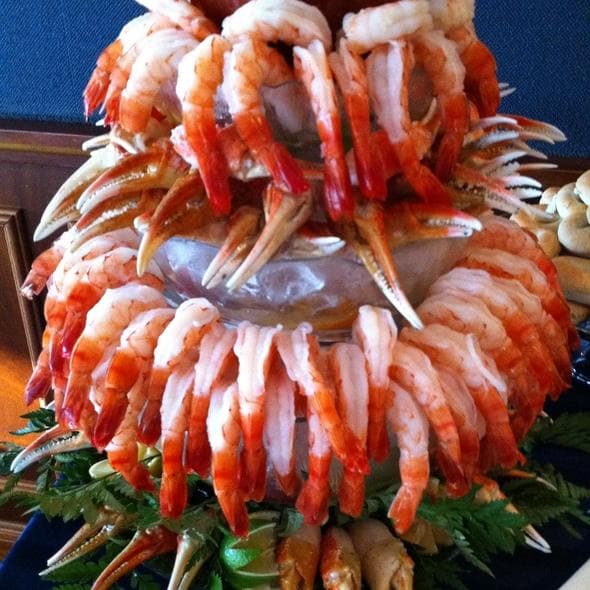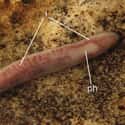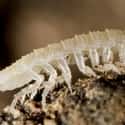-
(#9) Hausera Hauseri Use Specialized Hairs To Get Around, Unlike Their Flatworm Ancestors
Hausera hauseri is the first cave-dwelling species of planarian (flatworms) discovered in South America. While most flatworms have two eyes or even two pairs of eyes (one set being sub-eyes), the Hausera hauseri's eyes have disappeared and been replaced with ciliated sensory cells, specialized "hairs" that help it navigate its environment and seek out food. Like many cave-dwelling species, the Hausera hauseri has little pigmentation and is virtually colorless. The species is still so new to science that little else is known about its life and functions.
-

(#14) Bristly Cave Crayfish Don't Have The Usual Markings Of Other Crayfish
Along with two, possibly three, other species of cave-dwelling crayfish that live in the subterranean waters of the Missouri east-central Ozarks, the Bristly Cave crayfish lack pigmentation and are ghostly white. Without light, the colors and patterns that would normally serve as camouflage are useless and the crayfish conserve energy by not producing pigment. Their vision is very poor, but they have modified bristles on their legs and pincers that serve as sensory organs that help the crayfish navigate in darkness, as well as extra-long antennae.
-

(#11) Braken Bat Cave Meshweavers Love Hot, Damp Caves
The Braken Bat Cave meshweaver spider was first discovered living in a cave in Bexar County, TX, in 1980. The species was not seen again until 2012, when a highway construction crew in San Antonio unearthed a six-foot deep natural hole in the median. The species had been presumed extinct so its rediscovery was heralded as the "eight-legged discovery of the millennium." The species, which thrives in caves because of the consistent temperature and humidity, are blind and colorless, unlike their terrestrial cousins.
-
(#7) The Cave Woodlouse Has Zero Pigment Or Eyes
The cave woodlouse was found in a pretty crazy place - a cave that was isolated for more than 5 million years. The cave, located in southeastern Romania near the Black Sea, has one the rarest ecosystems in the world. That's because it's been undisturbed by outside influences, including sunlight, for so long that the creatures within have developed some pretty unusual adaptations. It's hot and humid in the cave, low in oxygen, and the water at the bottom is warm and sulphidic, giving the cave a putrid, rotting eggs smell. A human being could only survive in the cave without breathing apparatus "for five or six hours before their kidneys" shut down.
The cave is covered by a thick layer of clay that prevents fresh water from seeping down into it, but the environment is perfect for the growth of a type of bacteria called "autotrophs" that grows in large floating mats of frothy foam atop the fetid water. And another bacteria called "methantrophs" that derives energy and carbon from methane gas bubbles. All creatures in the cave system feed off of this bacteria, including the cave woodlouse, which has adapted to life in total darkness by sacrificing its pigmentation - there's no need for camouflage or sexual displays in the dark - and its eyes.
-

(#5) Grand Canyon Pseudoscorpions Have No Stinging Tail
Scientists were amazed when two new species of pseudoscorpions - ancient relatives of scorpions that lack tails with venomous stingers - were discovered living in the same caves in the Grand Canyon. It is rare for two related species of predators to co-exist in a single cave system, so scientists think the cave must have a robust ecosystem with ample food. Named Hesperochernes bradybaughii and Tuberochernes cohni, the two species of arachnids have adapted to the lack of a stinging tail by having venomous stingers in their pincers. They retain limited use of their eyes, but have lost much of their bodily pigmentation.
-

(#12) The Cave Planthopper Cannot Fly, As Its Wings Are Merely Ornamental
Discovered living in a single cave with a single small opening in the Iuiú municipality, Bahia, Brazil, this cave planthopper has developed differently than its relatives living in the jungle above. Like most troglobites, the cave planthopper, whose scientific name is Iuiuia caeca, lost its eyes and has very little pigmentation, giving it a pale yellow translucent appearance. Since flying is a high-energy activity, the cave planthopper has also sacrificed its ability to fly and has only non-functional wings.
New Random Displays Display All By Ranking
About This Tool
The hidden and deep caves have unique environmental conditions that make the life of creatures mysterious and challenging. Many cave environments are in constant darkness and high humidity, and it is difficult for animals to absorb nutrients and even full of gases such as sulfur and methane mixtures that are lethal to most organisms. However, there are still many cave-dwelling creatures who have evolved and adapted to live in these gloomy, dark environments.
Insects, fish, and crustaceans can penetrate into mysterious caves all over the earth, perhaps the most well-known cave dwellers are bats. Here the random tool introduced 15 fascinating skills of cave-dwelling creatures.
Our data comes from Ranker, If you want to participate in the ranking of items displayed on this page, please click here.











